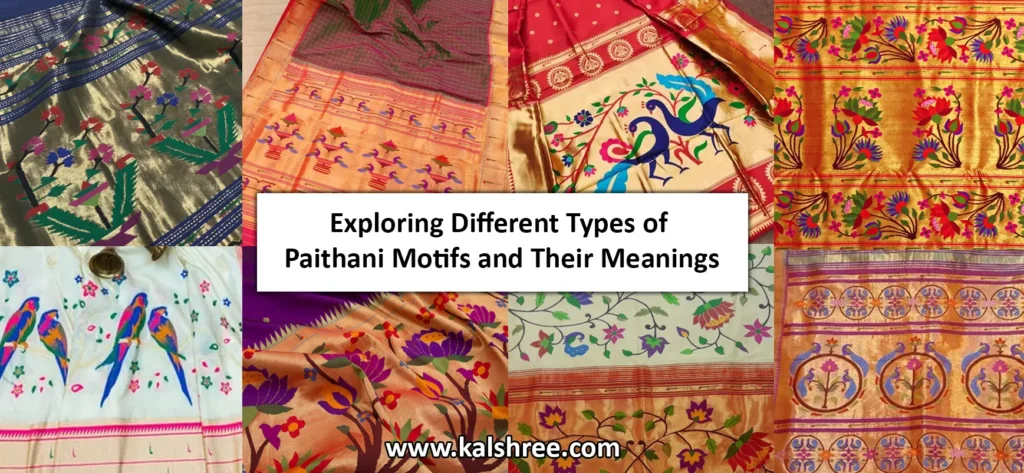Paithani sarees, renowned for their intricate designs and vibrant colors, hold a special place in the world of Indian textiles. Originating from the town of Yeola in Maharashtra, these sarees are a testament to exquisite craftsmanship and timeless elegance. One of the most captivating aspects of Paithani sarees is their motifs, each carrying a unique meaning and story. In this blog, we will delve into the various types of Paithani motifs and their significance, exploring how these intricate patterns contribute to the saree’s rich heritage.
1. Asavali (Creeper Vine)
The Asavali motif, also known as the creeper vine, is a classic design in Paithani sarees. This motif represents growth and prosperity, symbolizing the continuous journey of life. The intricate vines and leaves are meticulously woven into the fabric, often enhanced with vibrant colors and detailed embroidery.
2. Buth (Lotus)
The lotus, or buth, is a prominent motif in Paithani sarees. It signifies purity and spiritual enlightenment, deeply rooted in Indian culture and mythology. The lotus motif is often placed in the pallu (end piece) of the saree, adding a touch of grace and elegance. This design is a favorite among brides for its auspicious connotations.
3. Mor (Peacock)
The peacock, or mor, is one of the most iconic motifs found in Paithani sarees. Representing beauty, grace, and pride, the peacock motif is intricately detailed with vibrant blues and greens. This motif is not only aesthetically pleasing but also adds a regal touch to the saree, making it a popular choice for special occasions.
4. Bangadi Mor (Bangle Peacock)
A unique variation of the peacock motif, the Bangadi Mor features peacocks within a circular design resembling a bangle. This motif symbolizes eternal love and commitment, making it a preferred choice for wedding sarees. The combination of circular patterns and peacock figures creates a visually stunning effect.
5. Tota-Maina (Parrot Pair)
The Tota-Maina motif, depicting a pair of parrots, is another enchanting design in Paithani sarees. This motif represents love and companionship, often used to symbolize marital harmony. The parrots are typically woven in contrasting colors, creating a lively and dynamic pattern on the saree.
6. Narali (Coconut)
The Narali, or coconut motif, is a traditional design in Paithani sarees. It signifies fertility and prosperity, often associated with auspicious ceremonies and celebrations. The coconut motif is usually woven in golden threads, adding a touch of opulence to the saree.
7. Rui Phool (Cotton Flower)
The Rui Phool, or cotton flower motif, is a subtle yet significant design in Paithani sarees. It symbolizes simplicity and purity, reflecting the humble origins of the fabric. The cotton flower motif is often used in the body of the saree, creating a harmonious and balanced design.
8. Ajanta Lotus
Inspired by the ancient murals of the Ajanta caves, the Ajanta Lotus motif is a distinctive design in Paithani sarees. This motif represents artistic excellence and historical significance, blending traditional craftsmanship with cultural heritage. The Ajanta Lotus is a tribute to India’s rich artistic legacy.
Conclusion:
Paithani sarees are more than just garments; they are woven stories, each motif carrying a piece of India’s cultural heritage. The meticulous craftsmanship and symbolic meanings behind these motifs make Paithani sarees a cherished possession for any connoisseur of traditional Indian textiles. Whether you choose the elegance of the lotus, the grace of the peacock, or the simplicity of the cotton flower, each Paithani saree tells a unique tale of beauty and tradition.
Browse Our Variety of Paithani Sarees
Join Us on Social Media:
Stay connected with us and become a part of our vibrant community on social media. Follow Kalshree Traditions on Facebook, Instagram, and Pinterest to get a sneak peek of our latest collections, styling tips, and exclusive offers.


